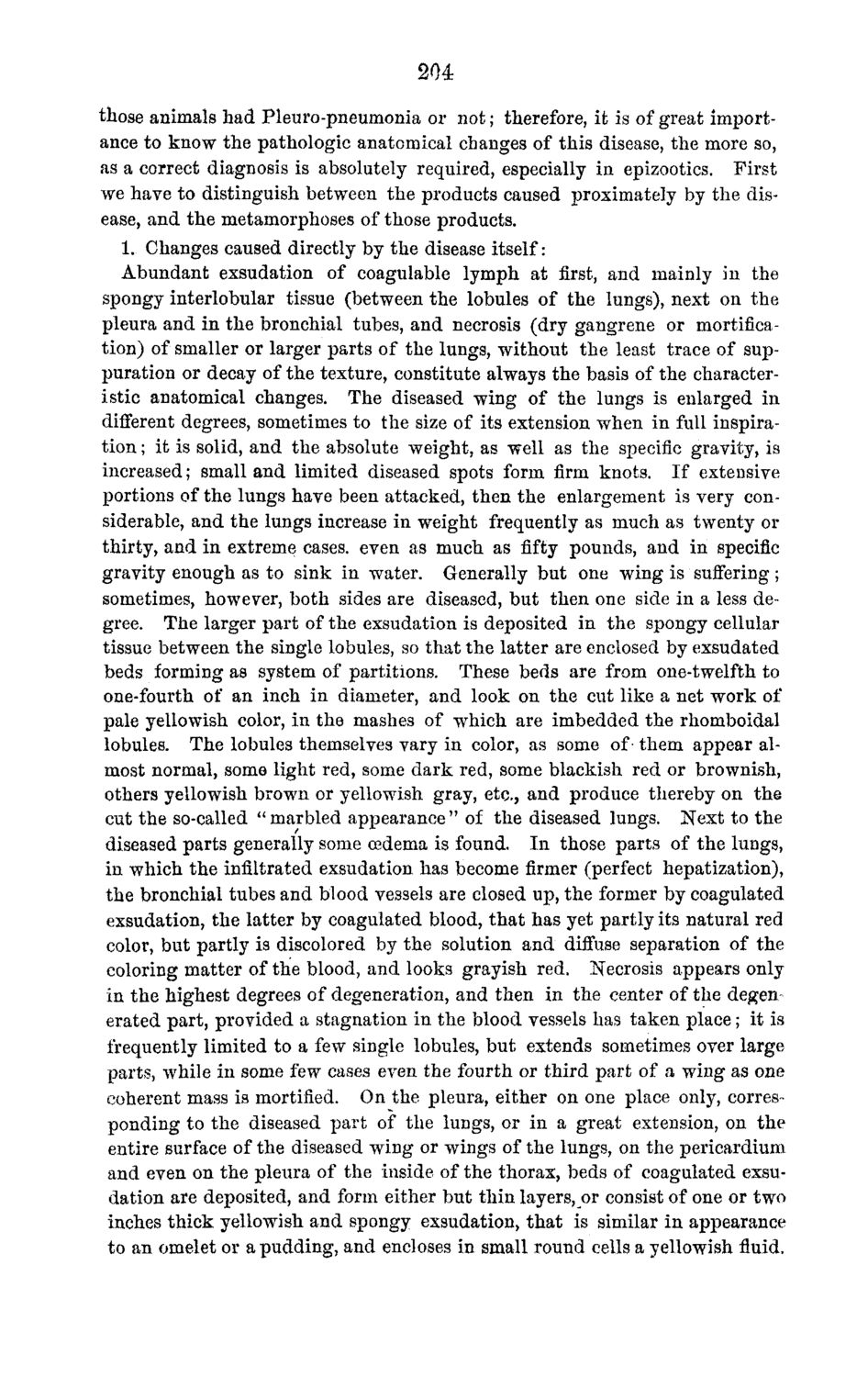| |
| |
Caption: Board of Trustees Minutes - 1870
This is a reduced-resolution page image for fast online browsing.

EXTRACTED TEXT FROM PAGE:
204 those animals had Pleuro-pneumonia or not; therefore, it is of great importance to know the pathologic anatomical changes of this disease, the more so, as a correct diagnosis is absolutely required, especially in epizootics. First we have to distinguish between the products caused proximately by the disease, and the metamorphoses of those products. 1. Changes caused directly by the disease itself: Abundant exsudation of coagulable lymph at first, and mainly in the spongy interlobular tissue (between the lobules of the lungs), next on the pleura and in the bronchial tubes, and necrosis (dry gangrene or mortification) of smaller or larger parts of the lungs, without the least trace of suppuration or decay of the texture, constitute always the basis of the characteristic anatomical changes. The diseased wing of the lungs is enlarged in different degrees, sometimes to the size of its extension when in full inspiration ; it is solid, and the absolute weight, as well as the specific gravity, is increased; small and limited diseased spots form firm knots. If extensive portions of the lungs have been attacked, then the enlargement is very considerable, and the lungs increase in weight frequently as much as twenty or thirty, and in extreme cases, even as much as fifty pounds, and in specific gravity enough as to sink in water. Generally but one wing is suffering ; sometimes, however, both sides are diseased, but then one side in a less degree. The larger part of the exsudation is deposited in the spongy cellular tissue between the single lobules, so that the latter are enclosed by exsudated beds forming as system of partitions. These beds are from one-twelfth to one-fourth of an inch in diameter, and look on the cut like a net work of pale yellowish color, in the mashes of which are imbedded the rhomboidal lobules. The lobules themselves vary in color, as some of them appear almost normal, some light red, some dark red, some blackish red or brownish, others yellowish brown or yellowish gray, etc., and produce thereby on the cut the so-called " marbled appearance " of the diseased lungs. Next to the diseased parts generally some oedema is found. In those parts of the lungs, in which the infiltrated exsudation has become firmer (perfect hepatization), the bronchial tubes and blood vessels are closed up, the former by coagulated exsudation, the latter by coagulated blood, that has yet partly its natural red color, but partly is discolored by the solution and diffuse separation of the coloring matter of the blood, and looks grayish red. Necrosis appears only in the highest degrees of degeneration, and then in the center of the degen erated part, provided a stagnation in the blood vessels has taken place; it is frequently limited to a few single lobules, but extends sometimes over large parts, while in some few cases even the fourth or third part of a wing as one coherent mass is mortified. On the pleura, either on one place only, corresponding to the diseased part of the lungs, or in a great extension, on the entire surface of the diseased wing or wings of the lungs, on the pericardium and even on the pleura of the inside of the thorax, beds of coagulated exsudation are deposited, and form either but thin layers, or consist of one or two inches thick yellowish and spongy exsudation, that is similar in appearance to an omelet or a pudding, and encloses in small round cells a yellowish fluid.
| |